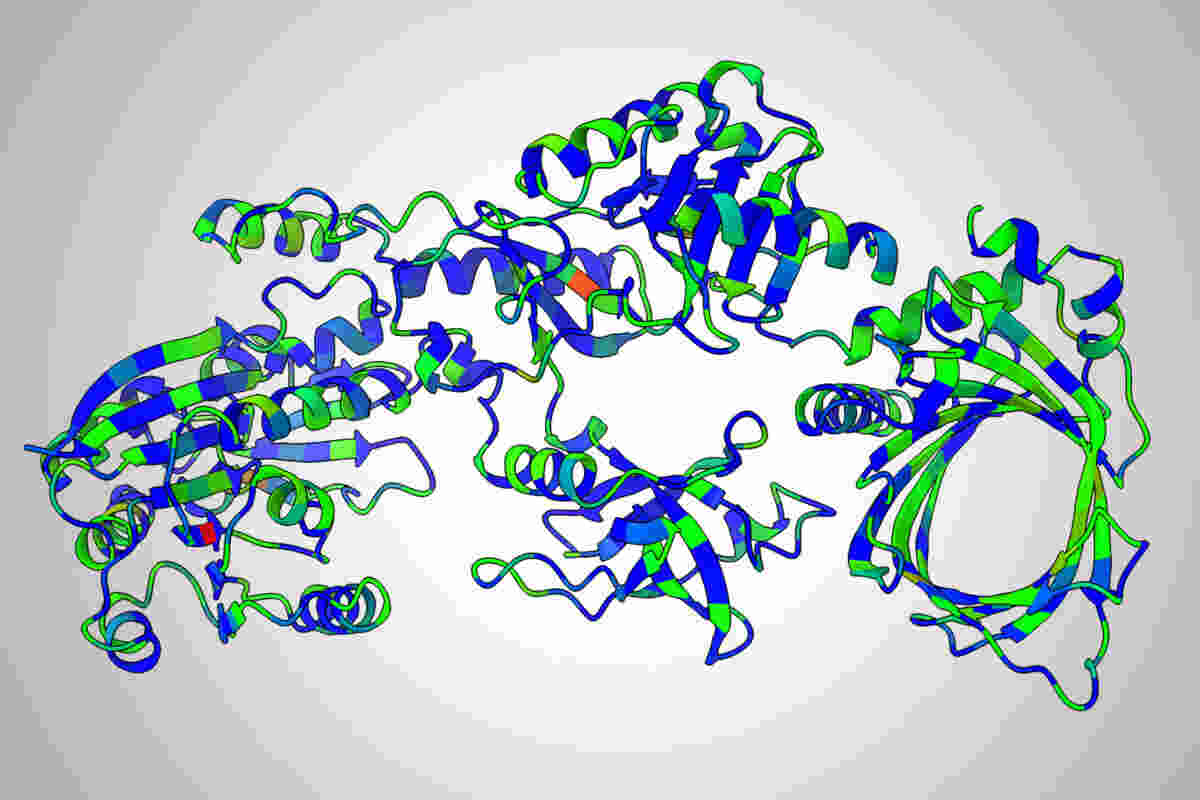THE LATEST
Artificial intelligence transforms biomedical science with groundbreaking protein discoveries

A groundbreaking artificial intelligence (AI) model called EvoRank was developed at the University of Texas at Austin. This AI model leverages evolutionary processes to create advanced protein-based therapies and vaccines, revolutionizing drug development and scientific innovation in biotechnology.
EvoRank was unveiled at the International Conference on Machine Learning and featured in a paper in Nature Communications. It has broken barriers in the quest for innovative proteins by utilizing the natural variations of millions of proteins to usher in potential breakthroughs in medicine and biomanufacturing.
Daniel Diaz, a research scientist in computer science and co-lead of the Deep Proteins group at UT, emphasized that EvoRank distills the fundamental principles of protein evolution to guide the development of new protein-based applications, revolutionizing drug development, vaccines, and other biotechnological pursuits.
The implications of EvoRank go beyond academic research and extend to real-world applications. With a grant of nearly $2.5 million from the Advanced Research Projects Agency for Health, the UT team, in collaboration with vaccine-maker Jason McLellan and the La Jolla Institute for Immunology, aims to use AI in protein engineering to develop breakthrough vaccines to combat herpesviruses.
EvoRank is not only theoretically powerful but also has a tangible impact on the development of protein-based biotechnologies. It provides a roadmap to arrive at groundbreaking designs faster and more efficiently, capturing the attention of the scientific community and industry.
Unlike its contemporaries, EvoRank goes beyond predicting the shape and structure of proteins; it empowers scientists to make alterations in proteins for specific functions, propelling the boundaries of what is conceivable in protein therapeutics. Jason McLellan, in awe of EvoRank's capabilities, revealed, "The models have come up with substitutions we never would have thought of...finding new space for stabilizing."
The potential of EvoRank to revolutionize drug development, reduce time and costs, and enhance the efficacy of protein-based therapeutics has captured the attention of diverse perspectives within the scientific and medical communities. It presents a significant opportunity to democratize and expedite the creation of transformative medical interventions, paving the way for a future where the boundaries of what is possible in biomedical science are redefined.
With such resounding success, Daniel Diaz sheds light on the future, expressing plans to develop a "multicolumn" version of EvoRank. This version aims to assess the impact of multiple mutations on a protein's structure and stability and to enhance predictive tools linking protein structure and function.
The unveiling of EvoRank ultimately stands as a symbol of human ingenuity, showcasing how the fusion of artificial intelligence and biological research can transform the landscape of medicine and healthcare, igniting a curious fervor for the endless possibilities that lie ahead. The journey of EvoRank is just beginning, promising an accelerated future of scientific and pharmaceutical exploration, where the barriers to what is conceivable are relentlessly challenged and reshaped.
